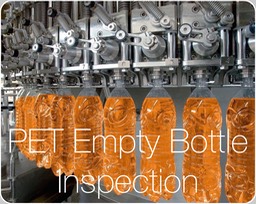Lubrication in a Food and Beverage Bottling Line
The traditional and still main function of the lubricants is visible in the figure on right side: to keep a separation between the surfaces of other materials, preventing friction. With the time and the diversification of the industrial technologies, the amount of the functions has grown. Today, food-grade lubricants must perform the functions as any other lubricant, providing protection against:
- wearing,
- friction,
- corrosion,
- oxidation,
- contamination,
- degradation by food, beverage, water or steam,
they have to dissipate heat, transfer power, being in the meantime compatible with rubber and other sealing materials, as well as provide a sealing effect in some cases. In addition, different applications within the Food, Drug and Beverages business demand that lubricants have to:
The historic goal of the lubricants was the separation of other surfaces, to prevent friction and to decelerate surfaces’ wearing (credit Lubriplate Lubricants Co., 2014)
- exhibit a neutral behavior toward plastics and elastomers,
- be able to dissolve sugars,
- comply with food, health and safety regulations,
- be physiologically inert, tasteless or odorless,
- be internationally approved.
The last point is particularly relevant when considering that it conditions the international future saleability of the production of the Beverage Bottling Line. Modern food-grade lubricants can be eated without to experience negative consequences.
The modern food-grade lubricants are chemically engineered with much more than lubricants. They also include < 20 % detergents, anti-fungal agents, anti-bacterial substances, etc. (credit Lubriplate Lubricants Co., 2014)
Understanding Viscosity
One of the most important features of the lubricants is its viscosity. In layman words, the viscosity of a fluid is a measure of its resistance to gradual deformation by shear or tensile stress. For liquids, it corresponds to the informal notion of “thickness”. Because of its definition, it is strictly related to the energetic level of the fluid, itself measured by its temperature. Why ? From a deeper point of view, viscosity is related to shear stress and the rate of shear in a fluid, illustrating its dependence on the mean free path of the diffusing particles. With reference to the video below, imagine to launch a billiard ball marked B in the middle of sixteen others, marked A1, A2, …, A15, A16 in movement on a circular table. Balls experiencing unavoidable recoils after hitting the table borders or another ball. Establish a statistics of the mean free paths of the ball B, after successive hits and recoils. After having increased the average speed of the sixteen billiard balls on the table, launch again the ball B test on the table. Increased average speed means an increased kinematical energy of the balls A1, A2, …, A15, A16. Compare the statistics of the mean free paths of the ball B and you’ll discover something relevant. To different average kinematical energies are related to different values for the mean free paths.
Viscosity is related to shear stress and the rate of shear in a fluid, illustrating its dependence on the mean free path of the diffusing particles. The diffusing particles may be represented by sixteen blue colour balls. Compare the statistics of the mean free path of a test ball B launched between sixteen others in movement before at slow and later at high speed. We’ll discover that different average kinematical energies are related to different values for the test ball B mean free path
Since years greasing is no more a necessarily manual activity. Perma automatic grease cartridge allow automatic lubricating systems. The cartridge visible above contains 120cc of grease and is timed for a six month period.
Kinds of Food-grade Lubricants
The following is a list of the food-grade most commonly used lubricants, all of them used up to 177 ºC (350 F):
- Aluminum Complex
Good high-temperature and water-resistant properties. Used in steel and paper mills. Most common food grade thickener with H1 approval.
- Polyurea
Excellent oxidative resistance because of non-metallic thickener. Grease of choice for electric motors and sealed-for-life applications.
- Organophilic Clay
Non-melt resulting in good high-temperature properties along with H1 approval for food grade.
- Calcium Complex
Good water resistance and H1 approval.
- Calcium Sulfonate
Very good inherent corrosion resistance and high EP along with H1 approval, but expensive because of high thickener content. Used in corrosive and high-load environments.
Food-grade Lubricants ISO and US Norms
The table below shows the most proper range of ISO viscosity grades for different applications, commonly part of the Food and Beverage packaging Line. Generally, lower base oil viscosities (e.g. ISO 100 or less) are used in high speed applications and higher viscosity base oils are used for slower speed or heavily loaded applications.
Relation between the ISO viscosity grade and the application (credit Lubriplate Lubricants Co., 2014)
Years ago the US Department of Agriculture (USDA) created the food-grade designations H1, H2 and H3. The approval of a new lubricant and its registration in one of these categories depends on the list of the ingredients and is strictly related to the possibility of contact between lubricant and food or beverage:
- H1 in food-processing environments where there is the possibility of incidental food contact;
- H2 on equipment and machine parts in locations where there is no possibility of contact;
- H3 used to prevent rust on hooks, trolleys, etc.
Deciding whether there is a possibility of contact is particularly difficult, implying to imagine a multiplicity of situations and configurations which are not associated to the common use of the Food and Beverage packaging Line. The minimum requirements the prospected Vendor of lubricants has to comply, allowing food and beverage production international saleability (and, we’d like to add, Production Manager peace-of-mind), can be resumed in the following five points:
- H-1 lubricants throughout the plant can significantly simplify the HACCP program by completely eliminating lubrication as a potential chemical hazard;
- NSF H-1 registered, Food Machinery Grade;
- manufactured in compliance with ISO 21469 guidelines;
- formulated with ingredients that comply with FDA Regulations 21 CFR 178.3570, 21 CFR 178.3620, 21 CFR 172.878, 21 CFR 172.882 and 21 CFR 182 for lubricants with incidental food contact;
- meeting USDA H-1 safety standards.
Would you run your own car knowing it has nearly no oil or that the grease to lubricate other mechanical organs terminated since months ? Food and Beverage Packaging Lines are more restrictive than a car, when dealing with the critical subject of Conveyors’ lubrification (image credit Integrated Engineering/2014)
Links to the other pages:

We start here a section of particular relevance for the safety of the Food and Beverages: the inspection of returnable and non-returnable glass empty bottles. Technological field where Graphene™ staff has 21 years of continued direct experience. …

Links to the pages: OverviewIn the video below two adiacent high-speed Aseptic PET Bottling Lines. Visible two Full Container Inspectors with inspections for Asepticity directly in-the-Machines (Filler and Closer). …

EMPTY CANS ARE EXTREMELY FRAGILE AND PRONE TO DEFORMATION. In the one-way conveyors before infeeding the Filler Machine, they reach speed < 5 m/s. Interposed along their journey from the Depalletiser til the Filler a twist, like the one visible here, one more source for deformations and jams (…

Successful operation, Quality and Production, of all the PET Bottling Lines requires PET bottles exempt by deformations which can damage the Filler Machine parts, straight bottles without holes nor objects into, with a perfect sealing area, etc. …

Water drops influence negatively the final performances of the Cap Inspection enacted by mean of camera systems. Refer to the figure on right side, where a green colour scanning line intercepted a water drop scanning, and measured its distance to the bottle’s plastic, greater than toward the closure top surface: a wrong distance.
Cap inspection before the CloserLinks to other pages:  This website has no affiliation with, endorsement, sponsorship, or support of Heuft Systemtechnik GmbH, MingJia Packaging Inspection Tech Co., Pressco Technology Inc., miho Inspektionsysteme GmbH, Krones AG, KHS GmbH, Bbull Technology, Industrial Dynamics Co., FT System srl, Cognex Co., ICS Inex Inspection Systems, Mettler-Toledo Inc., Logics & Controls srl, Symplex Vision Systems GmbH, Teledyne Dalsa Inc., Microscan Systems Inc., Andor Technology plc, Newton Research Labs Inc., Basler AG, Datalogic SpA, Sidel AG, Matrox Electronics Systems Ltd. …
Links to the pages:

What Container Full Container Inspectors and the related measurements whose goal is a binary classification (collectively name inspections), are the widest existing family between the Electronic Inspectors in the Food and Beverage Packaging Lines. …
Label InspectionLinks to the pages: IntroductionA single look to the 3D animation before shows a fact: today we are no more capable to imagine a container commercially successful without labels. …
Links to the pages: IntroductionFill level inspection and closure presence inspection were the first inspections conceived for Full Bottles, equipping the most modern Beverage Bottling Lines of forty years ago, when they were commonly named…
One of the squeezer™ QA Leakage Inspectors installed, started and commissioned by our staff. The unit visible here is assuring Food and Beverage Safety to the aseptic beverages of the Chinese gigantic Company Hui Yuan…
SamplingSampling is a Quality Control recursive operation, devoted to systematic control of net contents for all filling valves, removal torques for all capping or seaming heads. It allows to automatise an activity which if man-made requires long times and production stops. …






 Privacy Policy
Privacy Policy